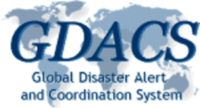RSS Feed Source: Science Daily
In collisions at CERN’s Large Hadron Collider, hotter than the Sun’s core by a staggering margin, scientists have finally solved a long-standing mystery: how delicate particles like deuterons and their antimatter twins can exist at all. Instead of forming in the initial chaos, these fragile nuclei are born later, when the fireball cools, from the decay of ultra-short-lived, high-energy particles.
Click this link to continue reading the article on the source website.



